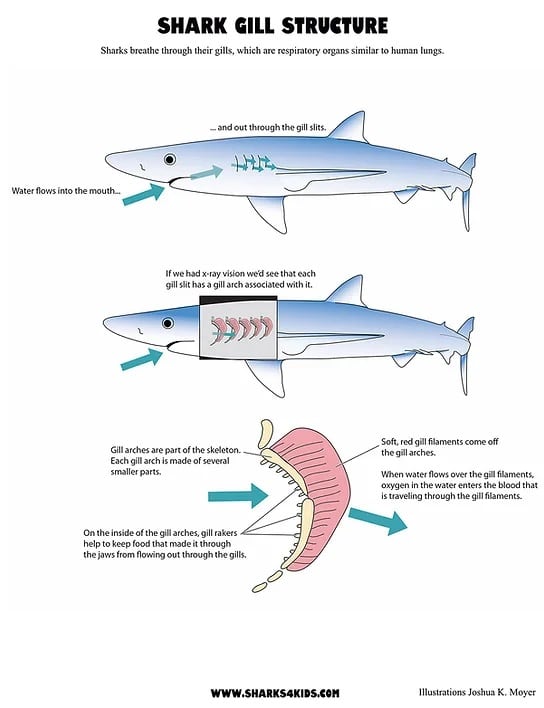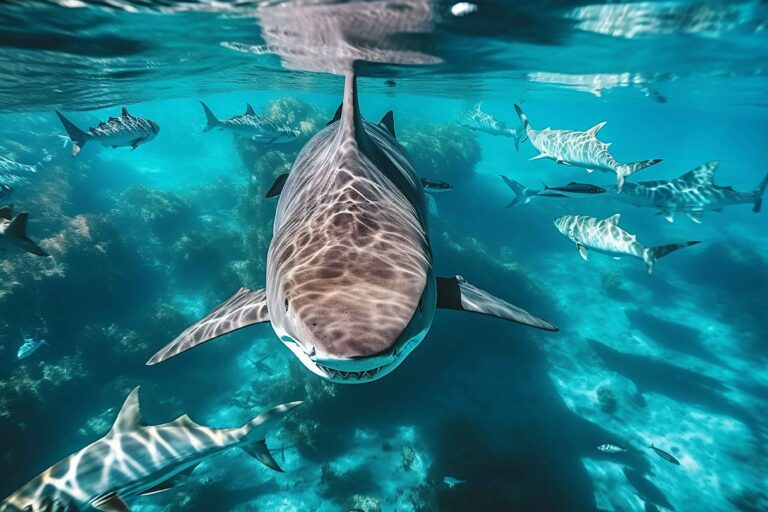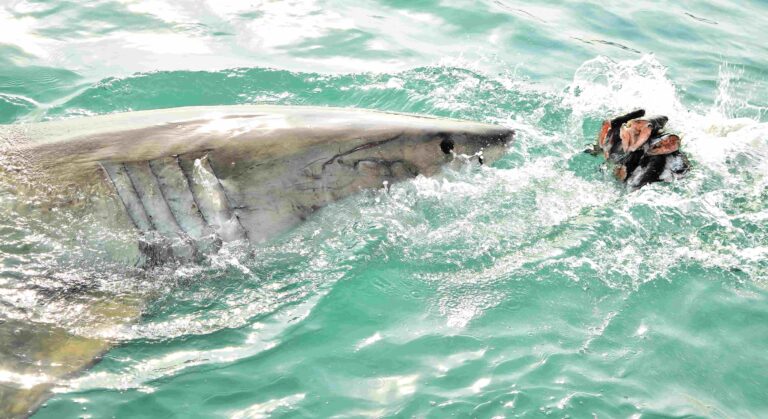By Courtney Cooper
How do Sharks Breathe?
One of the most common questions about sharks is whether they die if they stop swimming and how they breathe. All sharks have a nose, but it’s not used for breathing. Unlike humans, sharks don’t have lungs but rely on their gills to breathe. This blog explores how sharks breathe underwater and how different sharks vary in their breathing methods. For another interesting read, visit our shark facts rundown. Apex Shark Expeditions provides the best shark cage diving in Gansbaai.
How are Sharks able to Breathe Underwater?
While the air we breathe is made up of 21% oxygen (we only take in 25% of this), Water only holds a tiny 1% of oxygen (sharks take in 80%). Oxygen is present in water through photosynthesis (aquatic plants) and the atmosphere which is aided by turbulence such as moving water from the wind.
Generally, sharks take in water through their mouth and spiracles (if they have them), very small blood vessels then retain oxygen from the water while carbon dioxide waste is released out through the gills. Most sharks have 5 gills, there is a group of sharks called Cow Sharks that have more than 5 gills which includes the 6 Gill shark and the 7 Gill Shark.

There are 2 types of methods that sharks use to breathe. The first is called, “Buccal Pumping”. Sharks use buccal muscles in their cheeks to actively “inhale” water into their mouth which then passes through their gills. These cheek muscles enable the shark to stop moving while still pulling in water. Nurse sharks and Tiger Sharks are some of the many sharks that use buccal pumping to breathe. These sharks tend to rely on camouflage and ambush their prey therefore requiring less oxygen than sharks that need to swim fast to attack their prey (pursuit predators). Some sharks have spiracles, which are respiratory openings located directly behind their eyes. They use these openings to pull water through their gills, when their mouths are closed. This function is particularly useful when partially buried in sand, such is the case with the Angel Shark. Due to evolution, not all sharks have spiracles and thus rely on another method of respiratory.
The second method is obligate ram ventilation which requires the shark to swim with its mouth open. The faster the shark swims, the more water passes through their mouth’s and through their gills, which results in more oxygen. If they stop swimming, they will die. The Great White, Whale Shark and Mako Shark rely on ram ventilation to breathe, as they do not have buccal muscles. Sharks like the Great White and Mako rely on their speed as they are pursuit predators and therefore require increased amounts of oxygen. There is more oxygen closer to the surface and that’s why the Great White Shark is known to be a surface feeder.
The Reef Shark is the one the few known sharks to be able to use both buccal pumping and obligate ram ventilation. To answer the question of whether sharks will die if they stop swimming, yes, but only some of them depending on their respiratory method. There’s still so much more that we must learn about the mysterious sharks and how they survive.
We also discuss why hammerhead sharks have such funny heads.




